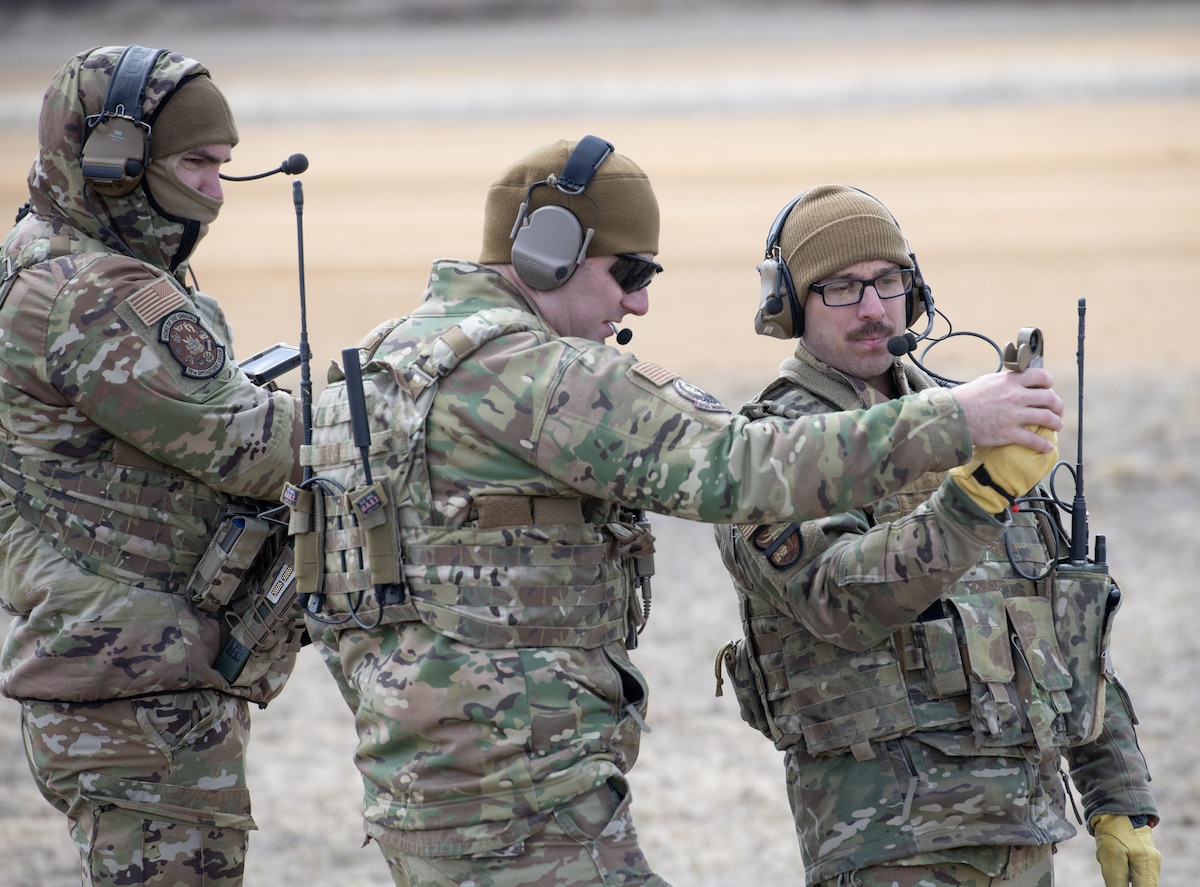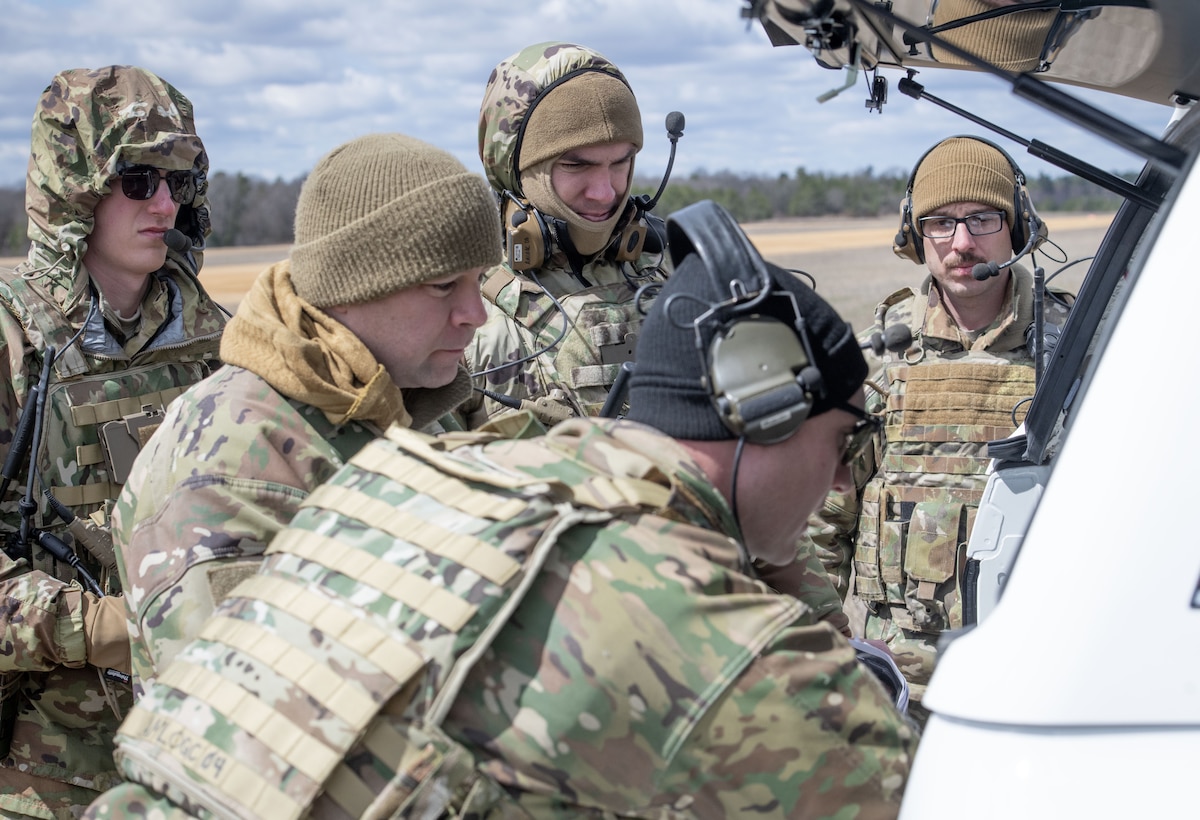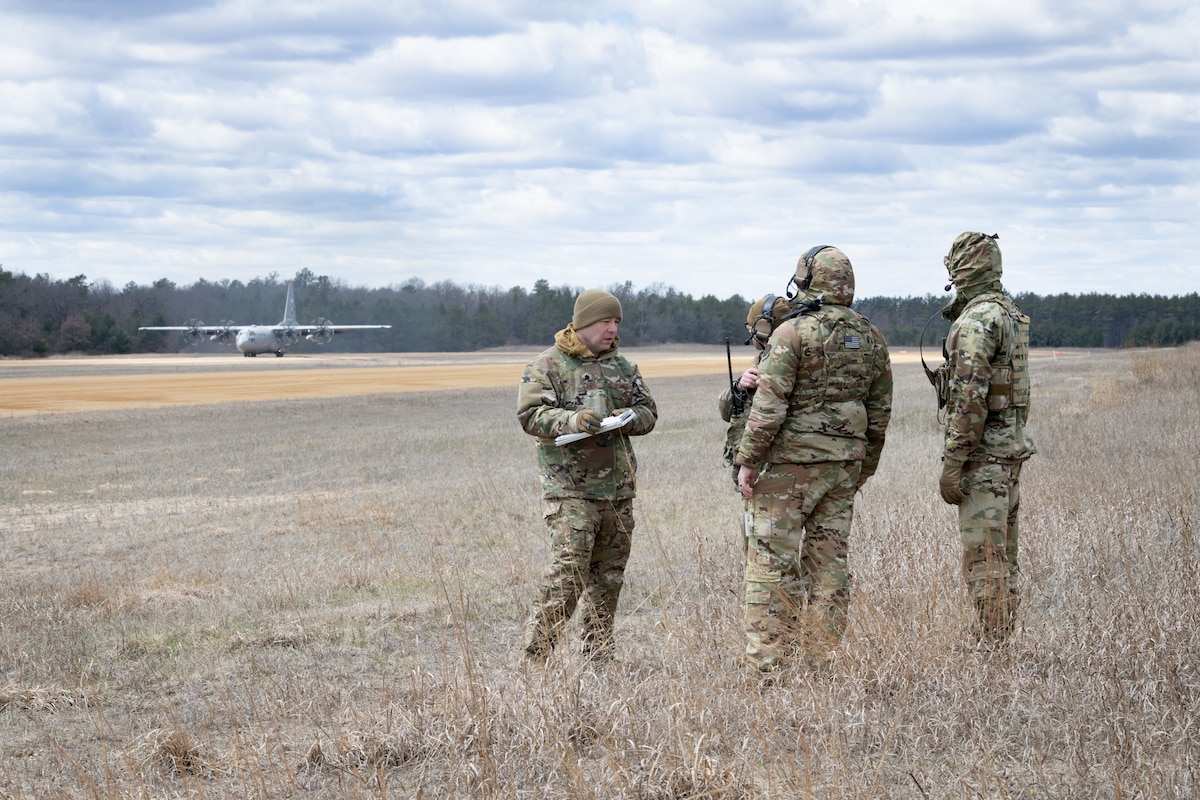In a perfect world, Air Mobility Liaison Officer's would be unemployed. Every branch of the military would speak the same logistical language, and airlift coordination would be flawless. Real-world operations, however, are complicated.
From the earliest battlefields to modern-day operations, miscommunication remains one of the biggest obstacles in Joint environments.
"Even though we're all in the military, we really don't speak the same language," said Capt. Christian Cartagena, AMLO qualifying course student.
That's why AMLOs are a necessity.
Why AMLOs matter
An Air Mobility Liaison Officer's primary objective is to eliminate communication confusion. Embedded with Army and Marine units, AMLOs act as translators and advocates, ensuring that personnel and cargo movements meet the needs of the Joint Force.
AMLOs aren't involved in every joint mission, but when a complex, large-scale operation needs to be accomplished, they're the go-to people.
"You have an engine and there's 2 gears on it," explained Lt. Col. Andrew Baker, AMLO qualifying course director. "One gear is the Army, Marines, you name it-whatever joint user we're working with. The other gear is Air Mobility Command. The AMLO is like oil, lubricating it to reduce friction, keeping the parts from breaking down. Without oil, you can only go so far. We get things done more efficiently and effectively when [AMLOs] go out there and help."
A major part of this friction reduction is knowing processes and cultures outside of the Air Force.
"As an AMLO, I'm supposed to be as expert as possible on AMC's processes, policies and culture," said Baker. "I also have to learn that on the Army and Marine side of things."
Once an AMLO learns other military cultures, they're able to translate what was meant versus what was heard. They convert pressure points into actionable solutions.
"Similar to you getting a text message from a friend, 'how do I interpret their meaning behind this?'" Baker explained. "That's where we help out by clarifying intent or what's really going on in the leadership's mind at our user's headquarters."
"Ground truth" in action
After initial training, AMLOs join Army or Marine units and serve on their commanding officer's staff. In the headquarters staff, their role is to coordinate airlift, help with exercise planning and ensure that asset movement requests are being routed to the right place in AMC.
"In a perfect world, an AMLO would not exist," said Capt. Ryan McGill, AMLO qualifying course student. "Because the processes would just flow exactly how they're supposed to. The Army and Marines have their channels to talk with TRANSCOM and AMC to move their people and equipment by air. However, nothing's perfect and things get jammed up. So, when they hit a rough patch or a sticky point, we have the contacts and the enterprise knowledge to smooth things out so nothing gets held up and the mission gets accomplished."
Beyond staff coordination, AMLOs are boots on the ground troubleshooters, figuring out specific mission needs or reasons for mission stoppage. They call this "ground truth."
Commanders want to see things firsthand. We're in a perfect position to help our user plan, go downrange, do an evaluation on an airfield, landing zone, or drop zone and bring those details and firsthand knowledge back," said Baker. Since we've seen it, we now can speak better to the impact of using that location."
The ground truth provided by AMLOs helps AMC leaders and joint users keep the mission moving.
When no one knows why a C-130 isn't in the air or why a pallet hasn't been moved yet, an AMLO will "pack his bag with his radio, go there, take pictures, look at what's going on and then report back to HQ directly," said Maj. Daniel Stancin, AMLO qualifying course student.
Stancin elaborated, saying, "We're put out there in the field to look at exactly what's happening on the ground and communicate it directly [...] to whatever echelon in AMC needs to hear the information."
Training the translators
Every AMLO starts here at Scott, with the 435th Training Squadron. Up until this point in their career, these students have been in the cockpit, flying mobility aircraft. At Scott, they transition from pilots to joint mission enablers.
The seven-week curriculum covers staff work, tactical communication, Joint planning, Army and Marine culture and field leadership.
The course ends with a one-week field exercise at Fort McCoy, focused on landing and drop zone operations. While there, students use what they've learned in class to set up and operate a runway. Baker and his team train the students to become Senior Airfield Authorities, capable of evaluating landing zones, drop zones and more.
"We've taken them out of the aircraft," said Baker. "They know aviation, but now they have to learn more about what it takes to run an airfield."
The schoolhouse continues to provide top-tier training, setting a high bar for AMLOs, who must become experts in AMC's policies and procedures-and just as fluent in Army and Marine culture. That dual fluency is what makes them invaluable.
"[AMLOs have] become a victim of their own success," said Baker "They've proven time and again that they are a phenomenal go-to asset for AMC HQ. We've got to keep the training up to speed so they don't let anyone down."









